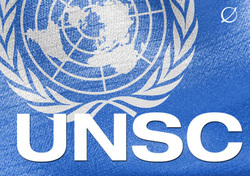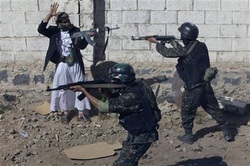
The United Nations is aware that terrorism is present almost every week, and there is no difference if there are innocent people involved, so this issue has been in their agenda for decades.
The last definition of terrorism was: "the intentional random murder of defenseless non-combatants, with the intent of instilling fear of mortal danger amidst a civilian population as a strategy designed to advance political ends" by Tamar Meisels. The Member States in the General Assembly and the Security Council have coordinated actions to counter-attack terrorism, establishing subsidiary bodies. They need to respect the human rights while taking actions, like sharing information about possible terrorist attacks or organizations.
In 2004 the Security Council adopted Resolution 1535, creating the Counter-Terrorism Committee Executive Directorate (CTED) to provide expert advice on all areas covered by resolution 1373 (including general reaffirmations about terrorism and its consequences).
The last definition of terrorism was: "the intentional random murder of defenseless non-combatants, with the intent of instilling fear of mortal danger amidst a civilian population as a strategy designed to advance political ends" by Tamar Meisels. The Member States in the General Assembly and the Security Council have coordinated actions to counter-attack terrorism, establishing subsidiary bodies. They need to respect the human rights while taking actions, like sharing information about possible terrorist attacks or organizations.
In 2004 the Security Council adopted Resolution 1535, creating the Counter-Terrorism Committee Executive Directorate (CTED) to provide expert advice on all areas covered by resolution 1373 (including general reaffirmations about terrorism and its consequences).
How to eradicate terrorism?

In September 20, 2008, the General Assembly from the UN signed the United Nations Global Counter-Terrorism Strategy. In the document, the delegations approved a 3-phases strategy:
*Adressing conditions to the spread of terrorism.
*Prevent and combat terrorism.
*Building States that can prevent terrorism.
The first step consists in eradicate all potential terrorist environments (promote peace and dialogue). Then, prevent and combat terrorism already existent (mainly, by precluding the access to the necessary means to start their attacks). And, finally look for a development in terrorism combat and prevention in all States (the United Nations calls to all States to communicate and cooperate in terrorism; States can help giving space to train an anti-terrorism group, provide technical assistance, researching, etc).
*Adressing conditions to the spread of terrorism.
*Prevent and combat terrorism.
*Building States that can prevent terrorism.
The first step consists in eradicate all potential terrorist environments (promote peace and dialogue). Then, prevent and combat terrorism already existent (mainly, by precluding the access to the necessary means to start their attacks). And, finally look for a development in terrorism combat and prevention in all States (the United Nations calls to all States to communicate and cooperate in terrorism; States can help giving space to train an anti-terrorism group, provide technical assistance, researching, etc).

 RSS Feed
RSS Feed